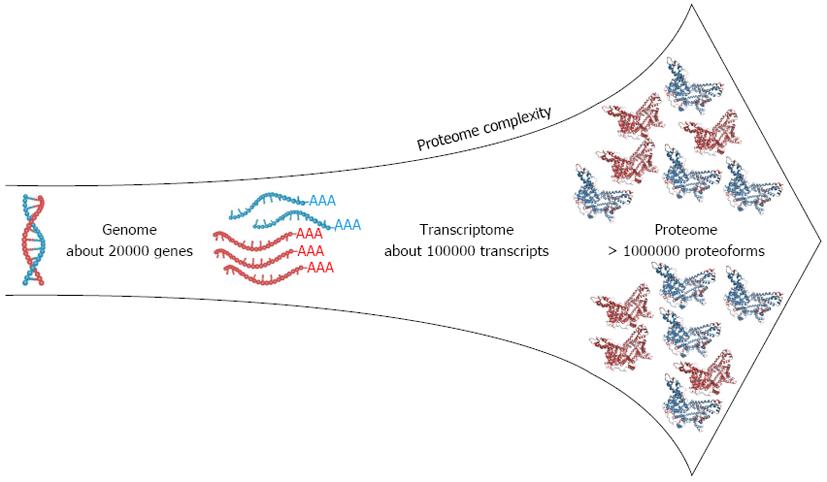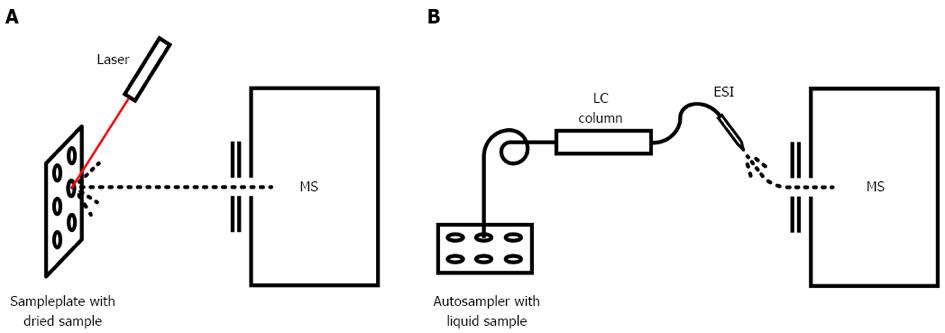Copyright
©2014 Baishideng Publishing Group Co.
World J Gastroenterol. Mar 28, 2014; 20(12): 3231-3244
Published online Mar 28, 2014. doi: 10.3748/wjg.v20.i12.3231
Published online Mar 28, 2014. doi: 10.3748/wjg.v20.i12.3231
Figure 1 Major increase is encountered in the proteome complexity, from genes to RNA transcripts and finally to the mature, often posttranslational modification modified, proteins (proteoforms).
Figure 2 Two commonly used mass spectrometry techniques.
A: Matrix-assisted laser desorption/surface-enhanced laser desorption/ionizatio time of flight mass spectrometry (MS), where the peptide or protein sample is dried on a target plate. Subsequently, a laser is used to evaporate the dried sample, and the generated gas phase ions are analyzed by the mass spectrometer; B: Liquid chromatography (LC)-electrospray ionization (ESI) MS, where the liquid peptide (or protein) sample is separated on a LC column, and sequentially eluted often over several hours. The eluted peptides are injected directly into the mass spectrometer by ESI and analyzed.
- Citation: Bennike T, Birkelund S, Stensballe A, Andersen V. Biomarkers in inflammatory bowel diseases: Current status and proteomics identification strategies. World J Gastroenterol 2014; 20(12): 3231-3244
- URL: https://www.wjgnet.com/1007-9327/full/v20/i12/3231.htm
- DOI: https://dx.doi.org/10.3748/wjg.v20.i12.3231














